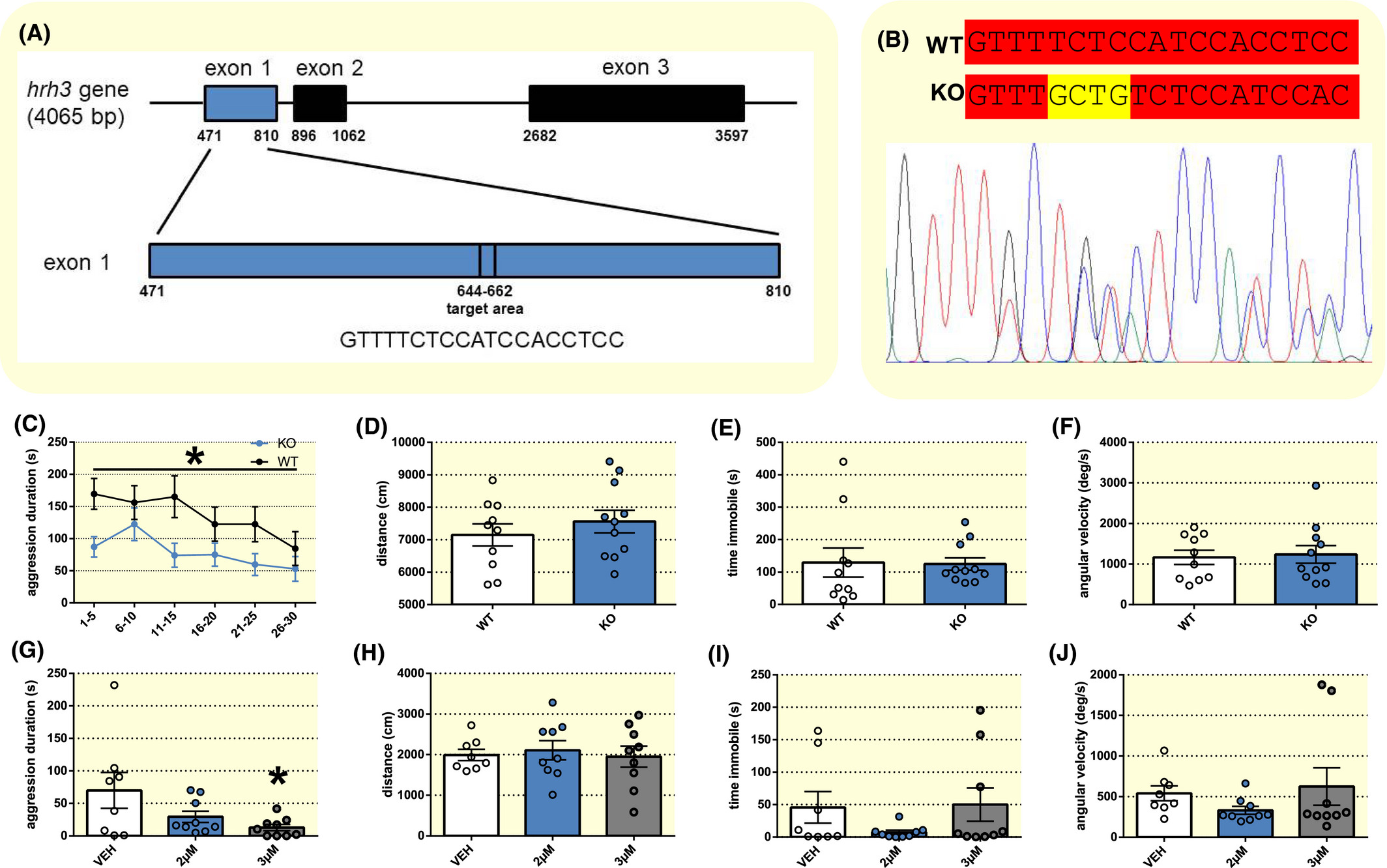Fig. 2 Genetic deletion and inverse agonism of the Histamine receptor H3 (hrh3) reduces aggression. A, Target site for CRISPR‐Cas9 genome editing within the hrh3 gene. Numbers represent bp positions. B, Representative Sanger sequencing chromatogram of an hrh3+/− fish. Wild‐type (WT) and mutant (KO) allele sequences around the mutation site are depicted at the top with a 4 bp insertion in the mutant allele shown in yellow. C, Time spent in aggressive display presented as 5 min time bins, (D) total distance travelled, (E) time spent immobile and (F) angular velocity during a 30 min mirror‐induced aggression (MIA) test. n = 10‐11. Repeated measures ANOVA or Student's t test. *P < .05 hrh3−/− KO vs WT. G, Time spent in aggressive display, (H) total distance travelled, (I) time spent immobile and (J) angular velocity in a 5 min MIA test after 1 h pre‐treatment with pitolisant (2 µmol/L or 3 µmol/L) or vehicle (VEH). n = 8‐9. One‐way ANOVA followed by Tukey's post‐hoc test. *P < .05 vs VEH. Data are presented as mean ± SEM
Image
Figure Caption
Figure Data
Acknowledgments
This image is the copyrighted work of the attributed author or publisher, and
ZFIN has permission only to display this image to its users.
Additional permissions should be obtained from the applicable author or publisher of the image.
Full text @ Acta Physiol. (Oxf).

